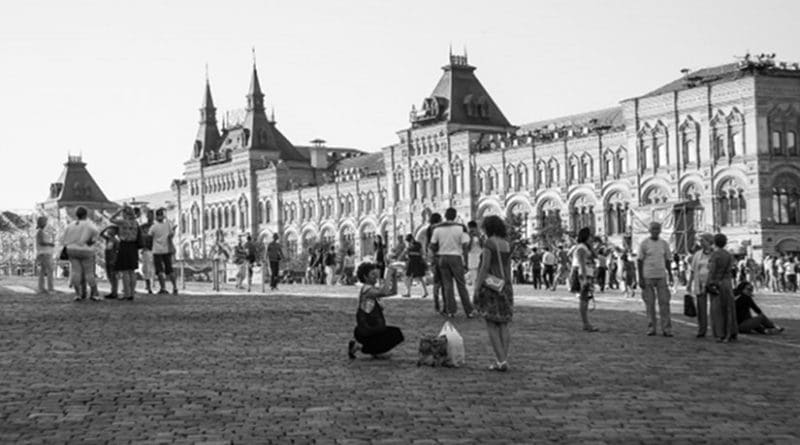‘More Than Three Million’ Muslims Now In Moscow, Russian Orientalist Says – OpEd
By Paul Goble
Those who are members of traditionally Muslim nations, both from within the Russian capital, the Russian Federation, the former Soviet space, and the Middle East, now number “more than three million” in Moscow, and their numbers will only increase, according to Fari Asadullin, a senior scholar at the Moscow Institute of Oriental Studies.
His figure, significantly higher than the ten percent that Russian officials invoke, reflects Asadullin’s conclusions that there are far more illegal migrants than the government wants to admit and that this community includes not only of Muslims from Russia and the former Soviet space but also from the Middle East (kommersant.ru/doc/2815999).
That makes Moscow the largest Muslim city in Russia and the largest Muslim capital in Europe, with “ethnic Muslims” now forming a quarter of some of the capital’s districts and becoming an increasingly visible part of the city’s public space, something that both the Russian government and Russian residents must accept.
As the city’s oldest Muslim community, Tatars from the Middle Volga, demonstrate, these people can eventually fit in to the city’s Russian cultural matrix, Asadullin says, unless the authorities try to block the religious practice of Muslims and Russians react to them with Islamophobia. In that event, many of the city’s new residents are likely to turn to radicalism.
One reason that the latest wave of Muslim immigrants into the city have had problems, he continues, is that many of them have never lived in a city before. Instead, they come from rural areas and seek to maintain cultural patterns, including endogamy, rather than integrate into the broader community.
As a result, members of this group who number “four to eight times more” than officials say, try to live apart as much as possible, and that plus the reaction of the government and the surrounding population often leads to high unemployment, alienation, and sometimes to “lumpenization and criminalization.”
According to Asadullin, “attempts by the authorities directed at artificially limiting the manifestation of religiosity by Muslims, given the obvious shortage of Muslim religious centers already over the last several years has had the unintended and opposite effect of leading to the opening of ‘alternative’ mosques,” based on ethnicity and attracting many Muslim young people.
The re-opening of the expanded Cathedral Mosque is a positive but insufficient step in the right direction, the orientalist says. What has to happen is the opening of more mosques and the acceptance by Muscovites of mosques, medrassashs, and minarets as part of the natural landscape of the Russian capital.
The experience of Moscow’s Tatars, who until two decades ago, formed the dominant fraction of the city’s Muslims, is instructive. These Kaismov and Nizhny Novgorod Tatars were able to find a balance between the maintenance of their ethnic and religious traditions and integration into the cultural and economic matrix of the Russian capital.
If the authorities would meet the new migrants as they met the Tatars in the past, the new migrants would likely integrate in much the same way, although their numbers and attachments to the places from which they came make it likely that they will insist on a new balance more in their direction of their ethnicity and faith, Asadullin says.
“Contemporary Moscow, for the first time in its modern history, has had to deal with the phenomenon of functioning migrant networks, as reflected in the formal and informal unions” of ethnic groups from abroad and on their print and electronic publications. Those publications tie these communities together and provide windows on their lives.
For example, Asadullin says, “Golos Tadzhikistana,” a Russian-language paper that has existed since 2005, regularly publishes articles about the problem of “’parallel marriages,’” which account for half of all Tajik marriages in Moscow. These involve getting a fictive divorce at home in order to marry someone with a Moscow residence permit.
He suggests that many ordinary Russians and even more Moscow intellectuals are interested in what he calls “Moscow Islam,” especially because it includes within its ranks people who follow all the main and many of the obscure Muslim traditions and thus is in a position to offer something to almost anyone.
There is the entire range of Muslim thought “from Ismailism and other Shiite denominations to traditional Hanafi and shafei trends of traditional for Russia Sunni Islam, and also a multiplicity of semi-legal sufi tariqats, including the Maghreb and other of its exotic branches” up to and including the esoteric doctrines of Rene Guenon.

